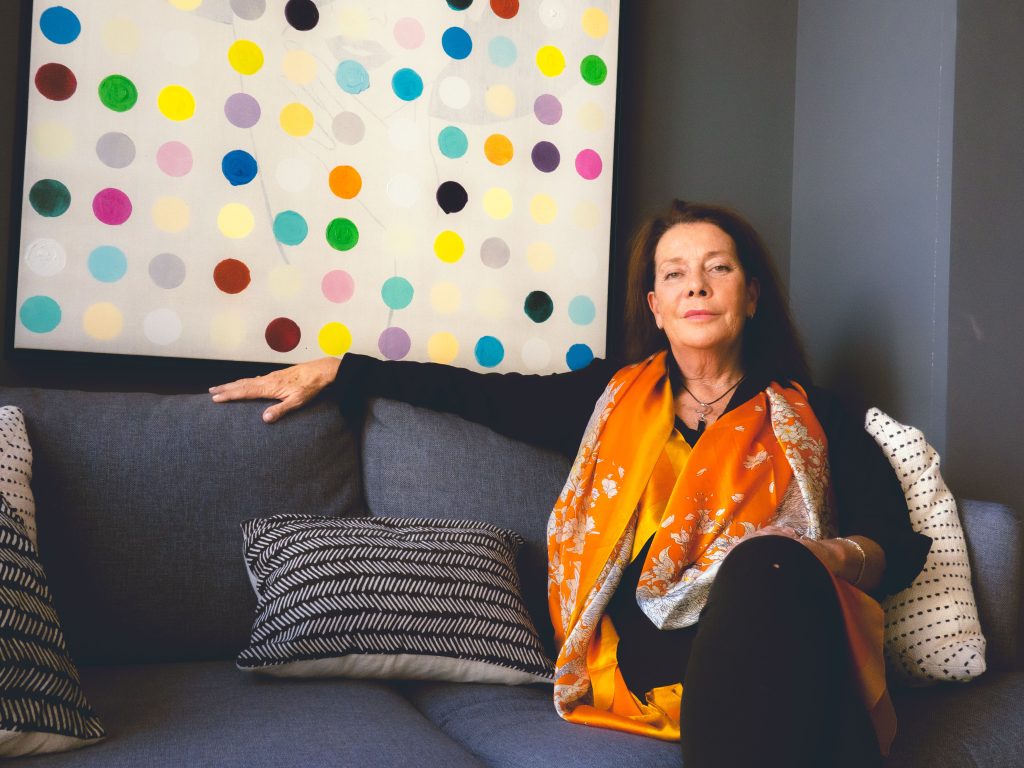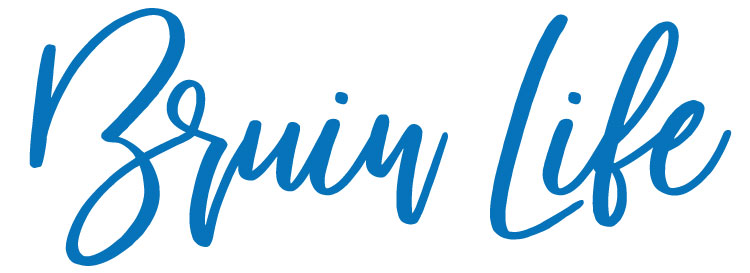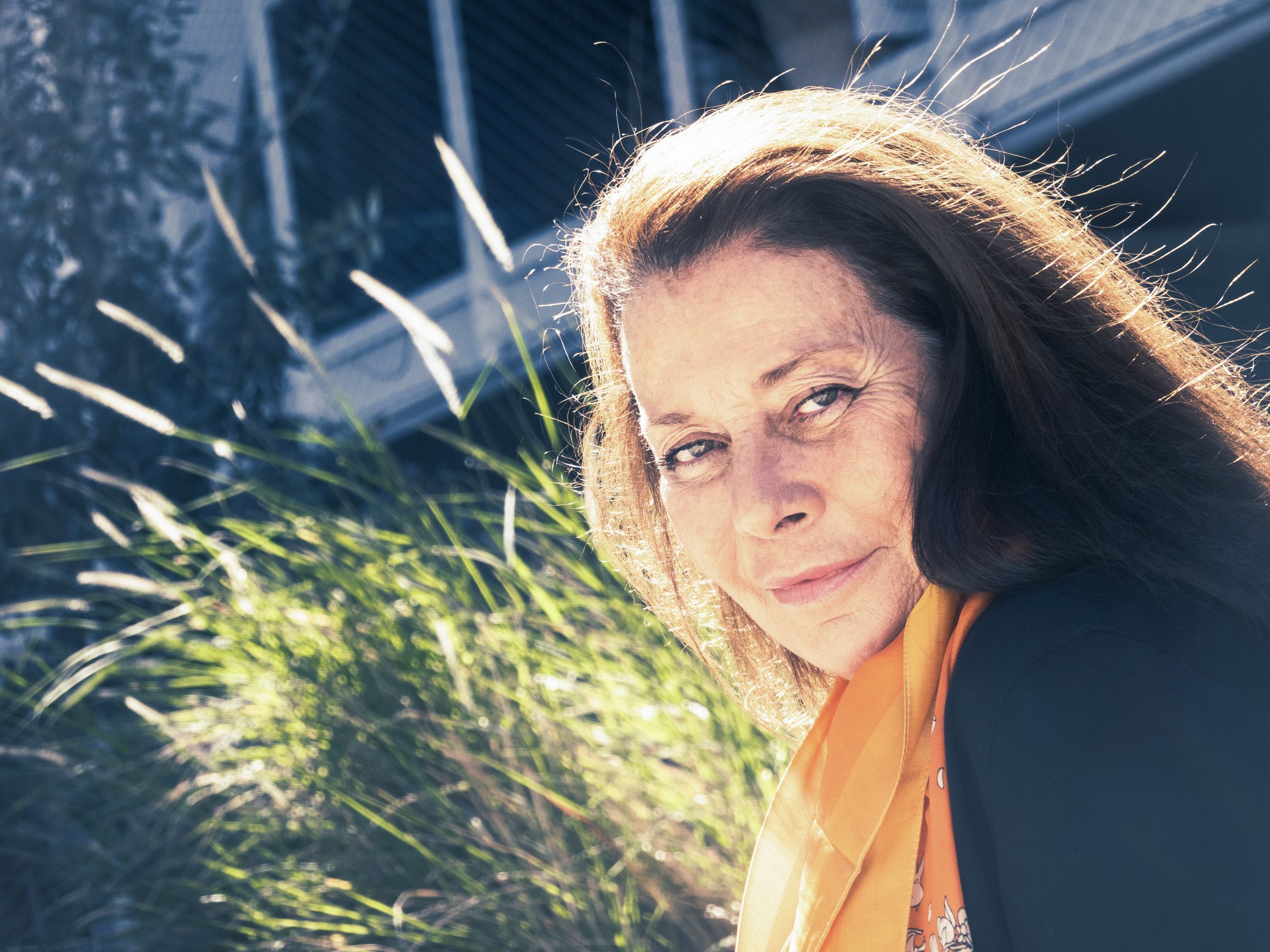In this exclusive interview, I had the privilege of sitting down with Florence Saint-Cricq, a distinguished UCLA neuroscientist alumna, and delving into the invaluable insights she gained throughout her illustrious career. Join us as we explore her journey, uncovering the tips and tricks she recommends for students eager to take control of their brains and harness their power. Don’t miss this opportunity to gain firsthand knowledge and inspiration from a seasoned professional at the forefront of brain research and mental health.

Alumna Florence Saint-Cricq addresses the brain, mental health, the future of neuroscience and more. Photo by Finn Martin/BruinLife
BruinLife: Hello, who do we have the pleasure of speaking with today?
Florence Saint-Cricq: Bonjour, my name is Florence Saint-Cricq.
BL: What initially piqued your interest in neuroscience, and can you share any experiences from your college years that influenced your decision to pursue this field?
Saint-Cricq: From a young age, I’ve been fascinated by the brain. My curiosity was ignited by a family friend, Anne Chappuis, who transitioned from psychiatry and psychology into the nascent field of neuroscience. At the age of eight, she became my mentor, guiding me through her research. Chappuis’ wise counsel steered me toward social psychology and physiology, eventually leading me into neuroscience. I see neuroscience as the key to understanding the brain’s impact on behavior, cognitive functions and the intricate neural connections within our minds.
BL: Many of our college readers are exploring different career paths. What advice would you give to students curious about the possibilities in neuroscience?
Saint-Cricq: In a world inundated with advice on well-being and psychology, neuroscience offers a unique perspective. It provides a tangible understanding of the brain, allowing us to design exercises and delve into neuroanatomy and neuropsychology. My passion for body, mind and soul integration emphasizes the interconnectedness of these elements. For aspiring neuroscientists, the focus should be on democratizing access to the brain, making it easily understandable and applicable.
BL: College students have busy schedules. What are some tips and tricks you have for keeping stress low and memory sharp in terms of brain health?
Saint-Cricq: The key is to avoid overcommitting. Instead of cramming, establish a disciplined routine. Just as a bodybuilder builds muscles incrementally, the brain benefits from consistent, daily effort. Focus on balance between body, mind and soul. Expand your perspective by doing tasks in your peripheral vision, promoting better absorption of material. Conquer fear, doubt and hesitation through strategic planning and disciplined follow-through.
BL: You advocate for mind, body and soul. How can students incorporate this into their lives?
Saint-Cricq: Rooted in Huna, an ancient Hawaiian wisdom, this philosophy recognizes three interconnected bodies: body, mind and spirit. When one suffers, it affects the others. During overwhelming moments, anchor yourself by focusing on the body. Connect with your senses to be in the present. Address the next step rather than fixating on a distant challenge. Release negative emotions from neural pathways through practices like gestalt, offering a transformative approach to peak performance.
BL: Can you recall a “Eureka” moment from your college days that affirmed you were on the right path?
Saint-Cricq: My journey took a poignant turn when my father passed away in a tragic accident when I was 12. Unwilling to accept the randomness of death, I delved into neurophysiopsychology, connecting my father’s vitiligo to his identity. This was a breakthrough — a realization that our experiences, even tragedies, leave imprints on our neural pathways, shaping our behaviors.
BL: What are some intriguing and relatable questions in neuroscience for college students?
Saint-Cricq: With over 100 billion neurons and 100 trillion synaptic connections in the human brain, the possibilities are endless. Neurosciences explore neural pathways and connections, unveiling the mysteries of emotions and behaviors. Understanding how negative emotions are embedded in neural pathways and practicing gestalt can be an intriguing entry point for exploration.
BL: Describe an aspect of brain function or behavior that college students can easily relate to in their everyday lives.
Saint-Cricq: Acknowledge the power of limiting beliefs. Our conscious minds don’t process negation, so the way we speak to ourselves matters. Additionally, grasp the concept that our brains filter an overwhelming amount of information. By focusing on what we want, we shape our reality. Train your brain to retain what truly matters in the sea of data.
BL: What is the biggest challenge students face today regarding brain health, and how can we address it?
Saint-Cricq: Lack of information about the brain is a significant challenge. The brain, the least understood part of our bodies, orchestrates our lives. Empowering students with knowledge about transforming their brains for peak performance, well-being and health is crucial. Shift the focus from worrying to utilizing neuroscientific insights for effective stress management.
BL: How can students form better habits for mental health?
Saint-Cricq: Start with the basics — stay hydrated, eat well and maintain balance. Hydration is crucial for optimal neural function. Cultivate habits that provide sustained energy instead of the roller coaster of highs and lows. Embrace equilibrium, focusing on the next step and being in the moment. The art of transformation lies in understanding the interconnectedness of body, mind and soul, ensuring peak performance and a positive mindset.
BL: What excites you the most about neuroscience research, and how do you think it might impact the college experience for students in the coming years?
Saint-Cricq: I believe the future of neurosciences is beyond our expectations.
The evolution of neuroimaging techniques will allow us to study and understand the brain and provide key information on brain cells and their connections. For example: thanks to a specially designed EEG (or electroencephalogram) by a neuroscientific clinic in Canada we can find out whether an athlete who had a concussion is well enough to play again. As of now it was only a guess and brought high levels of anxiety to both athletes and coaches and had in the past dire consequences. Today we no longer need to guess.
This EEG not only finds out precisely the state of a concussion but can also in six minutes let you know whether you might develop dementia and Alzheimer’s! This is revolutionary and only one example of the future of neurosciences. Neuroscience is a field that will develop so much over the next 50 years and will change the way we approach and treat the brain but also allow anyone to be a pioneer! Visionaries! Creativity and vision in science exist the same as in other fields. A field with such growth potential is rare and hence precious and being part of it is priceless.
BL: I know some students and people suffer from anxiety, so how can students tap into their potential and brain power to succeed on and off campus?
Saint-Cricq: Anxiety is usually triggered by fear, doubts and hesitation. Often linked to fear of the unknown. It is key to shift our mindset and focus when anxiety strikes. We get anxious when we are faced with an uncertain outcome. Hence, shifting focus and mindset will help you transform your perception of anxiety and understand what triggers it. One exercise to help you achieve this outcome is the quest for magic exercise. It helps rewire your brain in 21 days and helps you shift focus on demand unconsciously the same way you learned how to lace your shoes or drive a car. Anxiety becomes a habit and we do want to learn a healthier habit.
—-
In our interview, Saint-Cricq mentioned some exercises students could do to feel more grounded and to ease anxiety. I have included her exercises and descriptions of them below.
Exercise One: Quest for magic
Set out every morning to find at least three magical moments in your day. Magical moments can be anything you see, hear, feel, touch, smell and taste. A beautiful flower, the breeze on your face, hearing beautiful music, someone smiling at you, etc. Ultimately after 21 days of training, your focus will have shifted to be aware, thankful and grateful of anything you experience through your senses. This new habit will allow you to attract unexpected extraordinary opportunities.
Exercise Two: Releasing triggers at the unconscious level
Place your feet firmly on the ground, standing up or sitting down, feet shoulders apart, left hand extended palm up; ask your unconscious mind to place out of your brain and onto your hand any things relating to triggering anxiety. You will feel your hand getting heavier. Trust your unconscious mind. Once you finish that step, please look at your left hand and measure. Feel the anxiety triggers in your hand, and then make a conscious decision to either place everything your unconscious mind released onto your hand back into your head or decide to blow on it three times to let it go.
We are what we believe; whether you think you can or think you can’t, you are right! Everything is perception and perception is projection.
Exercise Three: The Tree
When you don’t have time to perform the release exercise, please visualize a tree, perhaps your favorite tree, one with deep healthy roots. Place your feet and shoulders apart, standing up, and visualize beautiful, strong, healthy roots growing from under your feet and growing deep into the earth so that you get grounded. When we ground ourselves, anxiety is reduced or released.
Our thoughts and words create our reality. Please always be aware of your internal dialogue and switch it consciously to a positive one. Nothing good ever comes from us thinking negatively about ourselves.


